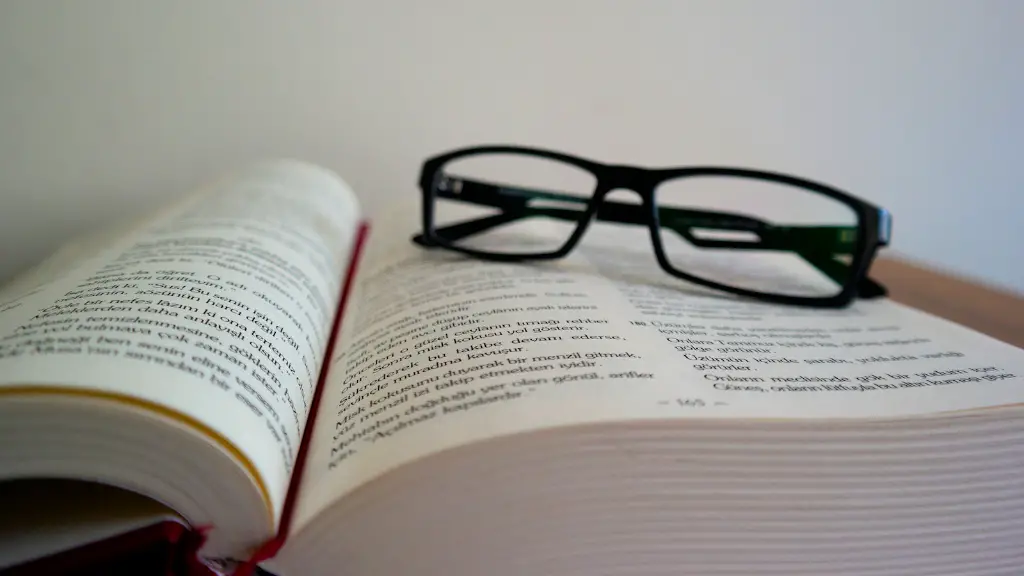What is Assonance?
Assonance is a rhetorical device that is used in poetry. It is a poetic device which intentionally repeats similar vowel sounds, located within a single line of verse. This rhyme can be used in a variety of different ways to create different effects, depending on the context and mood of the poem. By employing assonance, poets can make their words come alive and create a poetic atmosphere that is both vivid and captivating.
Definition of Assonance
Assonance is considered a type of alliteration, which is defined as the repetition of the same consonant sounds near each other in a line of poetry. When a poet chooses to use only vowel sounds as the instrument of repetition and rhyme, then it is considered assonance. Essentially, when vowel sounds are repeated and slightly varied in order to create a pattern within the same line of poetry or several successive lines, then it can be classified as assonance.
Origins of Assonance
Most notably, assonance was popularized in Greek epics by the likes of Homer. This form of poetic technique was also used by poets from the Middle Ages up to the present day, including William Shakespeare. By using assonance, these poets were able to capture emotions more precisely, with more finesse and panache. Beyond its aesthetic qualities, assonance has another advantage in that it makes poetic lines more memorable and easier to learn.
Examples of Assonance
One of the most famous examples of assonance is the opening line of Alfred, Lord Tennyson’s poem, “The Eagle”: “He clasps the crag with crooked hands”. This line, with its repeating “a” sound, is an example of assonance. Similarly, the following lines from William Wordsworth’s “The World is Too Much with Us” employ assonance: “Little we see in Nature that is ours; We have given our hearts away, a sordid boon!”. Wordsworth uses the same repeating “o” sound throughout the line to create a sense of longing and despair.
Types of Assonance
There are two main types of assonance that a poet can use in a poetic line: full assonance and partial assonance. Full assonance is considered a more powerful tool, since it uses all the same sound within a particular line, while partial assonance uses only part of the same sound. An example of full assonance is the line “The storm arose hurriedly” because it uses the same vowel sound throughout the line (“O” sound in arose and hurriedly). An example of partial assonance is using “less” and “pride” to emphasize the idea of humility.
Impact of Assonance in Poetry
In poetry, the use of assonance is extremely effective because it helps to create a strong sense of emotion by repeating the same vowel sounds. By repeating the same vowel sounds within a line, the poet can convey certain feelings such as sadness, joy, fear, etc. The words are also very powerful in their impact as they act as anchors that can hold the poem together. When well-used, assonance has the power to evoke powerful feelings in a reader.
Roles of Assonance in Poetry
The primary role of assonance in poetry is to create a pleasing sound that can evoke certain imagery in the reader’s mind. It is also used to emphasize certain words, as well as to create a sense of rhythm and flow within the poem. Lastly, assonance can be employed in order to create a sense of irony, as well as to make a poem more vivid and memorable.
How to Use Assonance Effectively
In order to use assonance effectively in a poem, a poet should be well-versed in the various types of assonance and the sounds that can be used to create that effect. They should also be aware of when and how to use assonance so as to best accentuate the words that most brilliantly embody the emotions they are trying to convey. Lastly, they should remember to experiment with different vowel sounds in order to find the one combination that fits with the poem’s overall tone and theme.
Is Assonance the Same as Alliteration?
Assonance is often confused with alliteration, but the two are distinct terms. Alliteration is defined as the repetition of identical consonant sounds in any sequence of words, while assonance is use of echoed vowel sounds in successive words. When used together in combination, these two devices can help to create a truly amazing effect.
Difference between Assonance and Other Types of Rhyme
Assonance differs from other types of sound-based rhyme, such as consonance and internal rhyme, as it focuses solely on the repetition of vowel sounds. Consonance is the repetition of consonant sounds, which is considered a more subtle type of sound arrangement than assonance. Internal rhyme is the repetition of similar sounds within a word, rather than the repetition found in assonance.
Conclusion
Assonance is an incredibly powerful tool in the hands of a poet. By using different vowel sounds to emphasize particular words, a poet can convey an array of emotions and evoke vivid imagery in the reader’s mind. Although closely related to alliteration, assonance differs in that it focuses solely on the repetition of vowel sounds. In the same sentence, a poet need not use both assonance and alliteration, since either can be used effectively on its own.


